duPont: Is Manual High School’s namesake tainting its legacy?
The legacy of the DuPont chemical company potentially casts a shadow over Manual, with decades of discrimination and pollution. Graphic by Brennan Eberwine
May 27, 2023
In dreary late January, I did something I had never done before and took the Ralph Avenue exit off Interstate 264. I drove along the Ohio riverfront before heading into the southwest corner of the city, using Louisville’s highways that form rings around the city. These highways take residents easily from east to west and north to south, converging downtown in a tangle of roads colloquially referred to as “spaghetti junction” that act as a magnet for traffic in the mornings. But many Louisvillians most likely don’t take the Ralph Avenue exit. The off-ramp reveals a road with modest houses, some sporting signs in the yard reading “PROUD UNION HOME” and businesses with gravel parking lots. At the end of Ralph is the intersection with Camp Ground Road, and a sprawling industrial complex. Straight ahead a brick sign reads “DUPONT” and “CHEMOURS” in branded fonts.
The leafless trees foregrounding the overcast sky with plumes of smoke rising from the plant unnerved me. I kept on asking myself: “why am I here?” The obvious reason was that this used to be the site of DuPont’s neoprene rubber manufacturing facility, one of the biggest and oldest before shutting down in 2009 without fanfare. I wasn’t particularly interested in how rubber was made, but instead wanted to connect the dots between the looming smokestacks and the ornate school in Old Louisville that I go into almost every day.
Decades ago, a graduate from duPont Manual High School may have ended up working at the DuPont plant. It was originally dedicated to working class Louisvillians learning trades, but was transformed in the 1980s into a specialized magnet high school with programs unavailable anywhere else, eventually becoming the best high school in Kentucky.
Both the plant and the school share the common “duPont” (the company capitalizes the “D”). The name is plastered on our lanyards, agendas and diplomas.
Every year students pour into duPont Manual’s gymnasium for pep rallies to beat our perennial foe, Louisville Male High School (without much success in recent years), and repeat chants and cheers showing our Ram spirit. One popular cheer involves half the gym saying “duuuuuuuuPont” and the other responding “Mannnnnualllll.”
Very few, if any, in the stands know much about the significance of this name to Louisville and the United States. I knew very little about the name myself besides a passing connection to the megacorporation. But the story of the duPont family, their company and the city of Louisville cross paths and intertwine.
“A Splendid Gift”
On the corner of Brook and Oak Street among the Victorian mansions, a large crowd gathered at a brand-new brick school on May 1, 1892. The early spring weather finally shone onto the building after days of gloom over the city. Louisvillians packed into the building to hear speakers at the dedication of this brand new school for boys to learn manual training. The first class of boys attending were forced to sit in an adjoining room due to the size of the crowd attending the opening. The elite industrialists, famed and revered in Louisville society, were also present, including William Richardson Belknap, John M. Dunlap and the peculiar scion responsible for the school’s founding: Alfred Victor duPont.
Alfred, or “Uncle Fred” as he was known, had come to Louisville in 1854 with his cousin Charles I. duPont to make his own way outside his Delaware family’s business (with their financial support of course). Alfred’s brother, Antoine Bidermann, joined them in 1856 and Charles left the “west” in 1859. Since the days of the brothers’ grandfather Éleuthère Irénée duPont fleeing revolution in France, the E.I. du Pont de Nemours company had become a multi-million dollar gunpowder manufacturing powerhouse contracted with the United States government. The company and the family tree grew vast branches that spread across the small state, and Alfred was informed he did not have a place in the company. So both Charles and Alfred traveled west and landed in the small, but growing Louisville. They founded A.V. duPont & Company in 1860 and bought a paper mill along the muddy Ohio River on 10th street.
The brothers proved themselves to be shrewd businessmen, expanding their portfolio into all sections of Louisville life, running railroads, streetcars and newspapers, and quickly becoming two of the richest men in the city. Their cousin Antoine’s wife and children lived in an Italianate mansion on a massive plot of land on Fourth Street in the heart of what is now called Old Louisville. It currently operates as a bed and breakfast.
Antoine was described as having an imposing appearance that matched his cut-throat business dealings, breaking strikes and wrestling with unions. He had become a powerful man with influence as vice president of the First National Bank and president of the 1883 Southern Exposition, an event showcasing the power of Louisville’s economy and manufacturing abilities. Almost in direct contrast, Alfred was noted in a Courier-Journal article as “an eccentric bachelor and a superior personage who dressed poorly” but was the real brains of the operation. He lived most of his life in Louisville’s Galt House Hotel. Despite his Tennenbaum-esque lifestyle, he was regarded as a civic icon for his various good deeds including selling his land around the duPont Mansion for what would eventually be Central Park.
As part of his industrial efforts, Alfred needed skilled workers. A certain story goes that only his nephew, A.B. duPont Jr., could hang trolley lines in the city because of his education at a technical school. This would simply never do for business, and thus Alfred Victor duPont presented the Louisville Public Schools’ Board of Trustees with $150,000 to build a school “free to all white boys in the city” to learn manual training.
It seemed to the public that the $150,000 donation, a significant sum, to establish Louisville Manual Training High School was another good deed by Louisville’s beloved Alfred duPont “A splendid gift” “The Courier-Journal” proclaimed on the 10th page.
Back at the opening ceremony, Alfred stood up to speak and hand over the deed to the President of the Louisville Public School Board, and the crowd broke into a standing ovation for him.
C.M. Woodward, a professor at Washington University and proponent of the then-expanding manual training movement, thanked Alfred for making his donation before the end of his life, lamenting how many great men don’t get to see the fruits of their gifts.
“It was more to be appreciated coming as it did from one who, he hoped, had many years of life to enjoy,” Woodward said.
Woodward was excited for Alfred to witness the good Louisville Manual Training School would do for the community. Boys would come to the school and not just learn, as Woodward described, “any one trade, as so many thought was the object, but he was familiar with the underlying principles of many trades.”
Despite Woodward’s excitement for Alfred to see the school’s benefits to the city, Alfred Victor duPont died just 15 days later. At the time, his death was cloaked in mystery because of its scandalous nature. Specifically, he died in a Cincinnati bordello on Eighth and York streets purportedly by a gunshot wound. duPont had actually fathered a child, and he had refused remuneration. Papers in Cincinnati reported this faithfully in their paper, but there’s some evidence the Courier-Journal chose not to report the story. The Delaware family, however, openly conceded this was the fate of Alfred Victor duPont.
“Of course it is useless for me to say that they are base lies….the matter has been thoroughly investigated and the result of the investigation is exactly what you already knew before you left here, and positively nothing more […] He went there to give the person some money who was sick and needing it, but the character of the place was in reality what we suspected.” said a duPont family letter.
This 19th century city of industrial duPonts has largely faded from city memory, with the family selling assets after Alfred’s death. duPont Manual High School no longer inhabits the red brick building on Brook and Oak and instead took over the larger Halleck Hall space. A bust of Alfred Victor duPont sits in a corner of Center hall, for the past few years a medical mask has haphazardly covered his face.
But the duPont legacy in Louisville didn’t end with Alfred Victor and Antoine Bidermann duPont. The Delaware duPont family kept expanding their influence and business and the company shifted from gunpowder into chemicals, “Better Living Through Chemistry” became their new slogan in 1935. And here they truly left their mark on Louisville.
Rubbertown Rises
On the second floor of the Louisville Free Public Library’s main branch on York Street is the Kentucky Room, part of the south building built in 1906 with money donated by industrialist Andrew Carnegie. It’s a stuffy, beige room with busts of Kentucky Poet Madison Cawein and U.S. President Teddy Roosevelt next to fraying book spines and black cabinets filled with microfilms of daily Courier-Journal issues. In one cabinet are newspaper clippings in manila folders specific to businesses who have made an impact on Louisville, and more broadly, Kentucky.
In the industry cabinet filed under the “Ds” is the DuPont neoprene factory folder, thick with yellowed headlines spanning 1900s Louisville. Inside was a little known story that described decision-makers at a company perpetuating rampant discrimination.
In 1931, two scientists from DuPont worked in a lab at the University of Notre Dame. They were hoping to invent new chemicals to expand the massive company’s empire even further. It was their discovery that through complicated chemical combinations with impossibly to pronounce ingredients they could make a synthetic rubber. It was stronger than the natural rubber painstakingly gathered from plants and could be useful in areas where traditional rubber simply couldn’t do the job.
The man who laid the groundwork for creating this rubber, Wallace Carothers, also created nylon a few years later. Carothers sadly suffered from bouts of depression and soon after committed suicide by way of a cyanide in lemon juice, leaving no note.
A decade later, the dominoes of war culminated in an attack on Pearl Harbor, thrusting the United States into the biggest war it had ever seen. Every facet of American life was disrupted in service of the effort. Factories previously building jukeboxes suddenly began producing weapons; entire industries were nationalized and essential resources were rationed.
One material the Army needed the most was suitable rubber for gaskets on tanks- something that would stand up to the strain of active combat. Neoprene became a precious commodity crucial to the United States war effort; making neoprene is highly involved and requires a complex chemical process. Producing it en masse couldn’t be done easily. New facilities would be needed to produce enough of it.
The United States government chose a flat plot along the Ohio River in the south end of Louisville to ramp up production for the war effort, colloquially dubbed “Rubbertown.” The area was intended to be a contained, efficient system for exclusively making miracle rubber. When the USS Missouri sailed into Tokyo Bay and World War II ended, it was time for the free market to take over. The War Assets Administration was tasked with transferring all public assets used during the war to private companies, and by the end of the 1940s, all of Rubbertown was privately owned.
DuPont swooped in to buy a 136 acre neoprene facility on Camp Ground Road and began expanding the factory through the 1950s. If you ask a Louisvillian about duPont, this is probably what they’ll remember. Alfred Victor duPont may have been the genesis, but the neoprene factory still lives in the collective memory.
The factory’s existence in post-war America contributed to the economic prosperity Louisville enjoyed. Over 2,000 Lousivillians were employed in well-paying jobs while producing thousands of pounds of neoprene in service of companies, citizens, and, of course, the United States government.
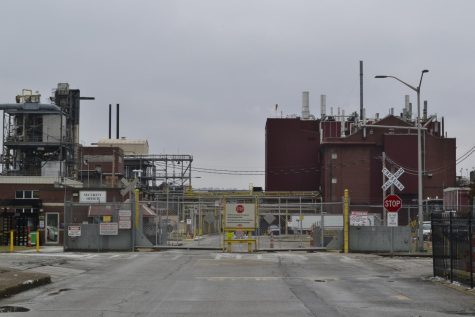
Booklets given to visitors of the facility boast of the factory’s commitment to buying local and employing thousands. It estimated injecting $19,285,000 into Louisville’s economy all from its plot on the Ohio River. Students from training schools like duPont Manual High School could get good-paying jobs and become productive citizens of society.
A 20-Year Fight
Louisville’s geography right on the dividing line between the north and south sometimes can spark debate on if we can really call ourselves “southern.” But the legacy of Jim Crow southern attitudes still run deep, whether we are “properly south” or not.
The River City’s Jim Crow era relied on a vain upkeep of proper social order; segregation was law and was a fact of life. That being said, Black Louisvillians persisted.
“By trial and error, imitation and invention, Louisville’s Black leadership developed a two-pronged strategy to meet the daunting challenges of the post-Reconstruction era: first, to make separate as ‘equal’ as possible; and, second, when possible, to attack and breach the walls of segregation,” University of Louisville research said.
But whenever people tried to affect real change in the city, racism always reared its head in the ugliest fashion. Andrew and Charlotte Wade’s attempts to integrate Shively were only met with dynamite and claims of sedition. JCPS’s attempts to desegregate through bussing in 1971 also resulted in riots and violence against students only trying to get an education.
The general sentiment of the time boiled down to: you stay on your side, and we’ll stay on ours.
Life in neighborhoods, social life, industry and schools relied on this understanding to keep peace. The DuPont neoprene factory acted as its own microcosm of this sentiment.
“There was one cafeteria and the front of it was for the whites and the back of it was for the Blacks,” John Robert Williams, a Black man employed at the factory from 1951 to 1979, said in a 1992 testimony.
Williams’ fight to get this sentence into the court record took decades. His lawsuit, filed originally in 1971, was not the first of its kind at the plant but would prove more consequential than its predecessor.
In a different lawsuit filed in 1968, seven Black employees sued DuPont and the Neoprene Craftsmen’s Union for discrimination, saying they had been held in a separate class of employment and were never able to move up through the ranks like their white counterparts. These seven workers had worked for an average of 18 years and had never been promoted. A judge agreed with them, and in 1969 the facility was ordered to immediately promote 12 Black workers into seniority roles. However, the court only found evidence of discrimination before 1956; no other examples of discrimination were found.
In theory, this meant that this 1968 lawsuit was the last reflection of Jim Crow on Camp Ground Road, and, following implementation of the court’s recommendations, equality was supposed to be the status quo. In reality, this lawsuit was only a precursor to a much longer fight for recognition of the discrimination.
The labyrinthian seniority structure of different sectors and recall rights under union contracts established at the company had kept Black workers coalesced in low-paying “low-skill” jobs. The plant’s racial makeup had always hovered around 15 to 20 percent Black, a mirror of Louisville’s demographics, but all well paying jobs in the engineering, utility and operations divisions were held by white workers. The hours were more appealing and the pay was better because of their status as skilled workers. Black workers in the classified division were given jobs such as those on the janitorial staff.
Williams had come to DuPont with an 11th grade education and prior experience in carpentry, but was put in the classified division working in shipping, transportation and janitorial services. He saw white workers, some with as little as a third grade education, get promoted over him and have as many as 50 workers under them.
Williams wasn’t alone in experiencing blatant discrimination; thus, he and over a hundred other Black workers filed a lawsuit. Complexity and stonewalling on DuPont’s part dragged the case for over a decade. DuPont’s legal team disputed access to documents vital to the case, then a judge dismissed the case in the late 1970s before that ruling was reversed. The sheer complexity and magnitude of workers affected also kept the case moving slowly.
The arduous process of the case and the cycle of attorneys who only seemed interested in getting DuPont to settle as quickly as possible wore on the workers as the case moved past the 1970s and into the 1980s.
“Every attorney we had took the case and they threw it on their desk and was waiting for DuPont to make an offer,” plaintiff Robert Garner said in a 1992 testimony.
Eventually, after going through seven lawyers, the plaintiffs found Bill Halliday, a lawyer who had previously worked for the Kentucky Commission on Human Rights and who was willing to take the case. Halliday was able to move forward with the case, and in 1989 DuPont put forth a settlement offer of $210,000.
With years of work and so little to show for it, many of the plaintiffs contemplated accepting the money. 36 of the original class of 156 Black employees had died and many of the remaining were ready to give up. But ultimately the workers voted to keep fighting.
“Thirty-Five years of discrimination, then they give me the money to buy a transistor radio,” Garner said in a Courier-Journal article. “I didn’t want to let DuPont get away with knowing that they done wrong and we’d given up. I was going to fight it all the way to the bitter end.”
The Black workers of DuPont also gained a cheerleader in Reverend Louis Coleman, known as the “Dr. King” of Louisville, whose father was a plaintiff in the case.
Thus the plaintiffs kept working until 1992 when the case finally went to trial and the Black workers of DuPont could finally speak about their time at the plant. By this time duPont Manual High School had transition into a magnet high school and was no longer focused on Manual training, its name a remnant of the past.
Presided over by Judge Carl B. Rubin, the trial lasted only three days owing to the case’s extensive backlog of evidence. Court transcripts recount binders and binders of statistics and testimony poured over throughout the trial. But in between those binders were personal stories such as John Williams’.
“Mr. Perry said to me several times that he didn’t think we should mix the races,” Williams recounted in testimony “he didn’t think Blacks should be in operation, and he was the chief steward in operation.”
Samuel W. Chapman worked at DuPont from 1950 to 1982 and was moved into the operations division as a part of the 1968 lawsuit settlement, but his promotion did not mean equality.
“We never did have an equal opportunity to progress,” Chapman said, “It was a token deal for the Blacks to move from one job to another. They picked the ones they wanted, they gave us a test, but I never did see no results.”
Joseph L. Calvin also remembers taking a test to go into a white division, but was deterred by the risk.
“He put the fear in me, he said you passed the test to go to engineering, but if you go and a layoff comes, you will go out the gate, won’t be able to come back to classified. So by me being married and have eight children, I couldn’t afford to take that chance,” Calvin said.
The trial was a chance to finally address the damage Louisville and DuPont’s discrimination had done to its citizens.
“For the first time, after 40 years of bitterness and frustration, you could see the relief that someone was hearing their story,” Reverend Coleman said.
On November 18, 1992, Judge Rubin ruled all 156 plaintiffs were discriminated against by DuPont that kept “effectively 98% of high-paying jobs for whites.” The settlement was to be decided before June 1993.
DuPont’s lawyers attempted to dispute paying most of the workers for various reasons including arguing that no promotions took place during the first half of the 1970s and a number of the Black employees were medically disqualified. This directly contradicted earlier testimonies in which the medical records were found to be forged by the DuPont personnel office and repudiated by the plant doctor. The plaintiffs refuted these claims one by one and eventually DuPont dropped the protest.
The final settlement totalled to $14 million, one of the largest discrimination settlements of its time. After legal fees, each of the 156 plaintiffs were given $79,355. By this time only 87 were alive to receive their settlements.
“I’ve waited a long, long time for this; it wasn’t any ice cream & cake” plaintiff Eddie Prince said.
What’s In A Name?
When I first stepped into the Kentucky Room, I don’t remember expecting to find and unravel a decades-long controversy of severe discrimination. Mostly what I was looking for was environmental issues caused by the plant, something that also often came up. But opening up that manila folder and pulling out headline after headline on hundreds of Black workers shook me. Intertwined with booklets touting the economic vitalness of the plant were stories of people struggling because of a company’s denial of their equality.
What’s left of the duPont’s legacy in Louisville? The trolley tracks have been paved over with asphalt, the jobs neoprene gave to the city no longer exist.
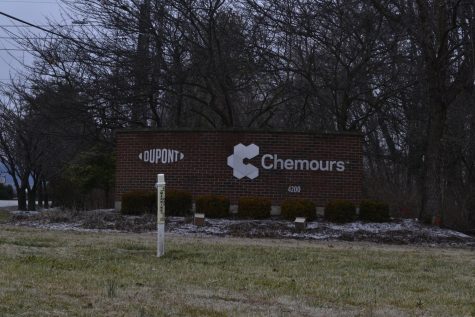
Some may argue the legacy DuPont leaves with the city is the polluted air and river runoff that Louisvillians breathe and the city works to clean up. In 2007, DuPont and Chemours, a spin off company of DuPont, were only behind Louisville Gas & Electric in the level of toxins released into Louisville’s air. Chemours was still the third largest polluter in Louisville as of 2021.
Instead, maybe the legacy is the contribution as the founding donors of the best high school in Kentucky. Some of the state’s most powerful leaders, including former State Representative Attica Scott, Representative Morgan McGarvey and U.S. Senator Mitch McConnell, counts duPont Manual as their alma mater.
Knowing all of this, a story so dense with individual narratives and corporate malfeasance, the call-and-response of “duuuuuuuuPont” and “Mannnnnualllll” becomes charged with meaning.
So, does JCPS change the name?
In recent years institutions across the United States and the world have changed names that were once venerated by buildings and removed statues of previously lauded figures as the United States has reckoned with racial inequality and questioned legacies. Columbia University’s Teachers College renamed a lecture hall that was originally named after psychologist Edward Thorndike because of his racist and anti-semitic beliefs, a statue of Confederate President Jefferson Davis was removed from the Kentucky State Capitol rotunda and city leaders have considered permanently removing the statue of King Louis XVI in front of Metro Hall that was vandalized in 2020.
Does the towering name of “duPont” belong with these others? duPont Manual High School would not be the first school to have its name called into question.
The J. Graham Brown School generated controversy in 2020 because the schools namesake philanthropist opposed integration. Does a person who was progressive in the 19th century still deserve veneration by having his name attached to the best high school in Kentucky?
JCPS’s Diversity, Equity and Poverty Department says no school names are off the table.
“JCPS is looking at the way in which people participated in the history of America (locally and nationally.) To that point, should certain participants in history be found to not uplift the values of equity, fairness, and civility for all – particularly as it relates to race – name changes will be considered.” JCPS Spokesperson Mark Hebert said in response to a request for comment.
The duPont legacy of Louisville is much more complex than just Alfred Victor duPont’s story. It encompasses the students of the school, the alumni, the workers at the factories and the neighbors who breathed in the air.
The answer isn’t easy nor will it be conveyed with brevity, but now these Louisvillians need to think about what duPont means to them.


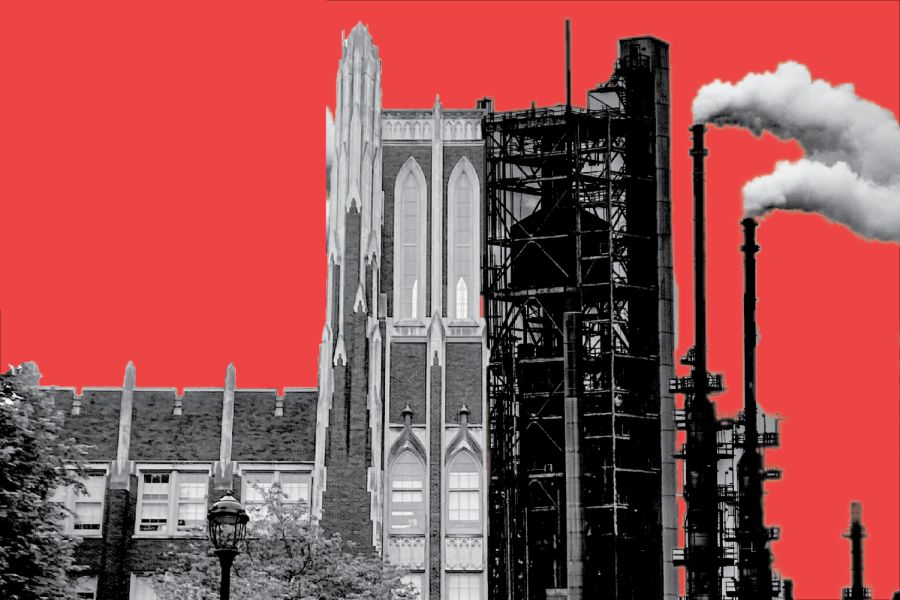







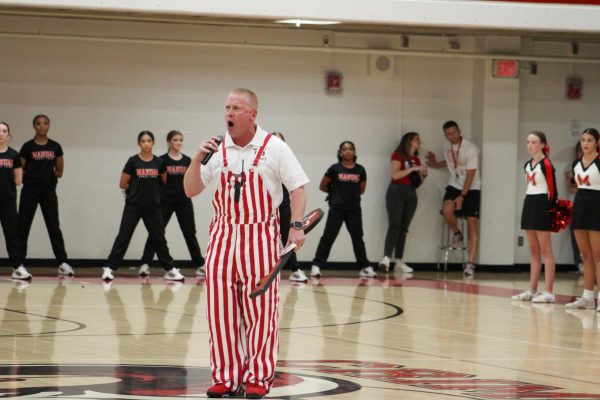



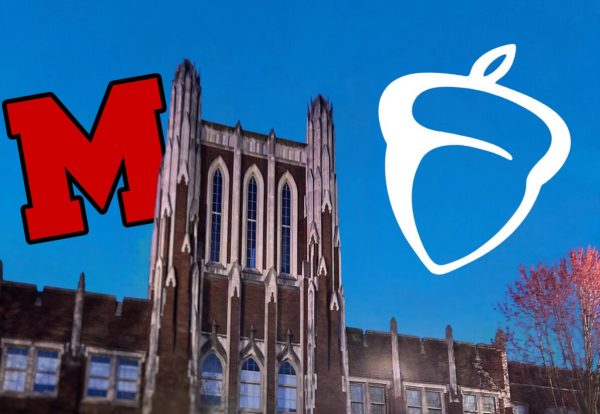
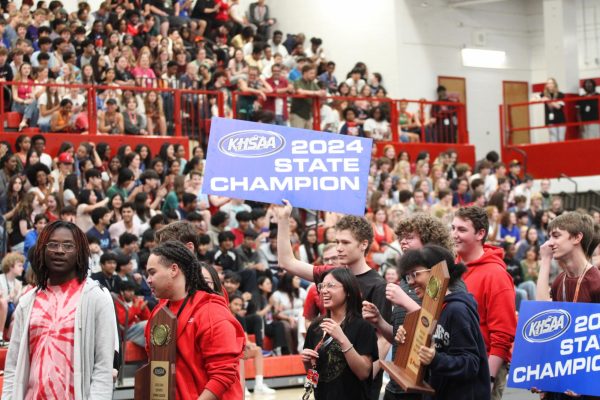

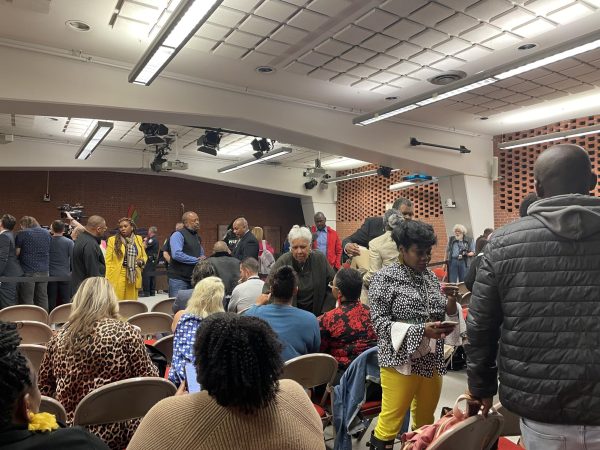
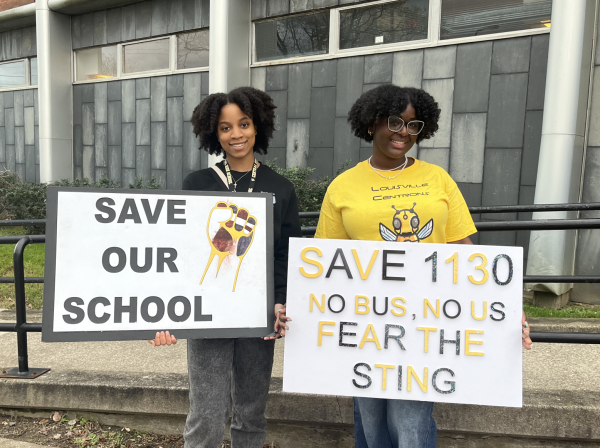
LA • Aug 16, 2023 at 11:02 am
“By 1965, DuPont had indication that PFAS increased the liver and kidney weight of rats.
In the late ’70s and early ’80s, the companies were seeing alarming signals in their animal studies — in one study, monkeys exposed to extreme levels of PFAS died — and among their employees. In 1979, DuPont observed that workers who had contact with the chemicals appeared to have higher rates of abnormal liver function. In 1981, 3M researchers alerted their DuPont colleagues that pregnant rats exposed to PFAS had pups with eye irregularities; that year, an employee at a Teflon plant gave birth to a child with one nostril, a keyhole pupil and a serrated eyelid. In 1984, DuPont detected PFAS in the tap water of three communities near its West Virginia factory.”
“Lawsuits filed beginning in the late ’90s raised serious concerns about a DuPont factory near Parkersburg, W.Va., that used a type of PFAS called PFOA to make Teflon. For decades, the company had dumped waste containing the chemical into the Ohio River and unlined pits on its property, polluting both the air and drinking water of tens of thousands of people. As part of a settlement, DuPont funded a study to determine if residents had been harmed by the chemicals. Its major conclusions, published online in 2012, were damning: The evidence, including blood samples and health surveys, indicated a “probable link” between PFOA and high cholesterol, ulcerative colitis, thyroid disease, testicular cancer, kidney cancer and pregnancy-induced hypertension.”
—from the New York Times Magazine, August 2023